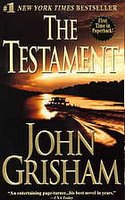It’s been almost a month since I’ve written on this blog. It hasn’t been for lack of ideas. I usually have at least an idea or two per day – usually inspired by something I’ve run across at work and/or while surfing the net. So I send myself a link or a snippet of an idea. Recently I was cleaning out my account and found scores if not hundreds of such emails. Unfortunately most of them never made it to the posting stage. So a specific part of my blogging resolution (yes, I’ve joined
Alaina on that one) is to actually implement the idea and post some blogs! :)
So, an immediate application: In a December 5 article in the New York Times entitled “Loved His New Novel, And What a Bibliography,” Julie Bosman describes a new phenomenon in novel writing – adding bibliographies to novels. In
The Castle in the Forest, author Norman Mailer includes an alphabetical list of 126 authors upon which he relied for writing his novel. Apparently there is some controversy in the novel world as to whether this is appropriate. After all, novels are neither known for their scholarly attributes nor read and relied upon as such. So why should the novel contain a bibliography?
Personally, especially for historical fiction, I think it’s a great idea. There have been a number of books which I have read (I’m thinking specifically of Bodie Thoene’s
Zion Chronicles series) that made me particularly interested in a specific period of history, and I wondered – how much of the story is based on historical fact? If such novels contained bibliographies of works upon which they relied or which inspired the story, it would be much easier for one such as me to learn more about the actual events.

On the other hand, I wouldn’t expect a bibliography for a novel such as Grisham’s
The Firm. At the same time, I can see one for his
The Testament – especially regarding the Pantanal, the “ecological gem” at the heart of the story.
What do you think? Have you ever wished a novel had a bibliography?































